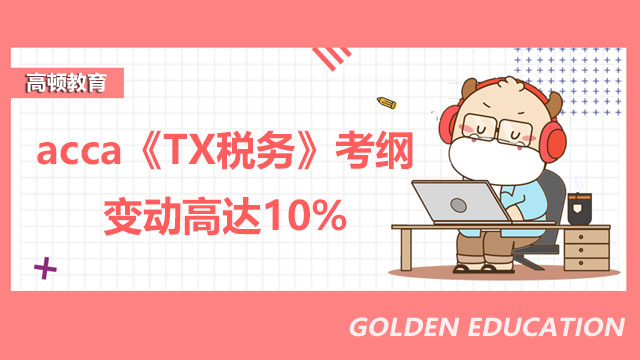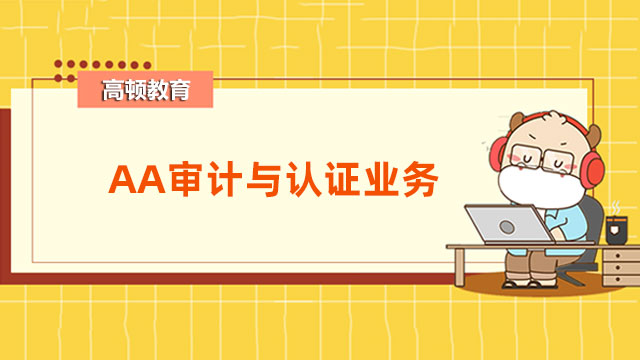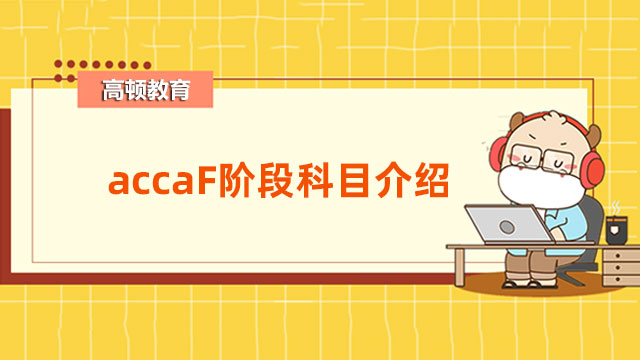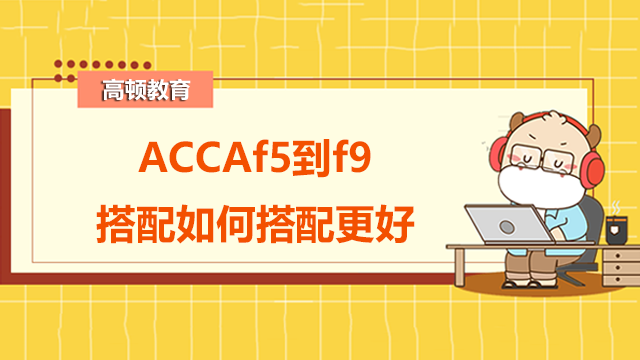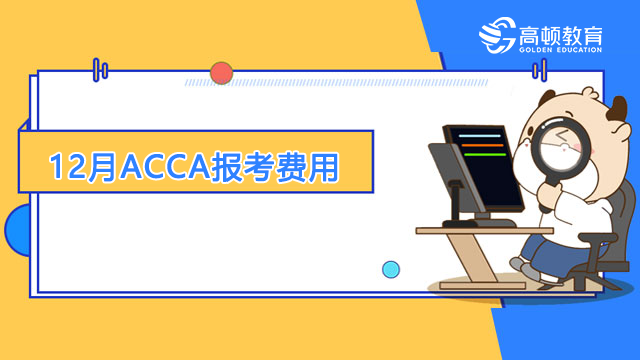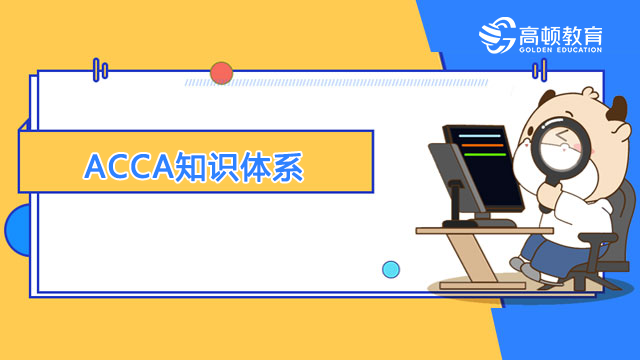ACCA F5考官文章:THROUGHPUT ACCOUNTING AND THE THEORY OF CONSTRAI
来源:
高顿网校
2014-12-24
A member of the Paper F5 examining team shares her latest read and how it changed her views on throughput accounting and the theory of constraints
I’ve just finished reading a book. It was the type of book that you pick up and you cannot put down (other than to perform the mandatory tasks that running a house and looking after a family entail!) Even the much-awaited new series of one of my favourite television programmes couldn’t tempt me away from my book.
Now obviously I’m telling you this for a reason. I love reading and it’s not unusual to find me glued to a book for several days, if it’s a good one. But you’ve gathered by now that the book I’ve been reading was not the usual Man Booker or Orange prize fiction novel that you might ordinarily find tucked away in my handbag. It was in fact The Goal: A Process of Ongoing Improvement by Eli Goldratt and Jeff Cox. If by now you’ve settled quickly into the belief that I must conform to society’s expectations of your typical ‘number crunching’ accountant of which – by the way – I’ve met few in reality, you are wrong. So what then, you may ask, makes this book so different from the image that the title conjures up? Let me tell you all about it.
The Goal, originally published back in 1984, presents the theory of constraints and throughput accounting within the context of a novel. It tells the story of Alex Rogo, a plant manager at a fictional manufacturing company called UniCo, which is facing imminent closure unless Alex can turn the loss-making plant into a profitable one within three months. In his attempt to do so, Alex is forced to question the whole belief in the US at the time that success in manufacturing is represented by a 100% efficient factory (ie everyone and every machine is busy 100% of the time), which keeps cost per unit as low as possible.
To be honest, before I read the book, I wasn’t really convinced about throughput accounting – although the theory of constraints has always made perfect sense to me. But, having read about both in the context of a very believable plant that was representative of many at the time, my views have changed. It’s easy to stand in a classroom and lecture about throughput accounting and criticise it for being ‘nothing new’, but what we have to remember is, back in 1984, this was new, and for those companies that adopted it, it made a huge difference.
I’m aware that, if I want you to share my renewed interest in throughput accounting, I need to tell you more about the story that gripped me. If I don’t do this, you’ll just go away having read yet another article about throughput accounting, and any doubts that you have about its relevance today will remain the same. On the other hand, I’m also aware that, when sitting professional exams, you need to have a working knowledge of throughput accounting that you can apply in the exam hall. Consequently, I’ve decided that, in this first article, I’ll summarise the story contained in The Goal, bringing out some of the basic principles of the theory of constraints and throughput accounting. Then, in the second article, I’ll talk you through a practical approach to questions on throughput accounting.
THE IMPORTANCE OF CONSIDERING AN ORGANISATION’S GOAL
Alex Rogo’s journey begins with a chance meeting with his old physics teacher, Jonah, at an airport, after attending a conference about robotics. This is just before Alex finds out about the threat of closure at the plant. The UniCo factory has been using robotic machines for some time now and Alex is proudly telling Jonah about the improvements in efficiency at the factory. Jonah is quick to question whether these improvements in efficiency have actually led to an improvement in profits. Alex is confused by the way the conversation is going. This confusion is reflective of the US thinking at the time. There is so much focus on efficiency and reducing labour costs with increased automation, but without consideration of whether either of these things are having any impact on profit. In the case of UniCo – and indeed many other real factories at the time – the so-called improvements in efficiency are not leading to increased profits. In fact, they seem to be leading to losses.
Jonah leads Alex to consider what the goal of UniCo really is. Until this point, he – like his superiors at Head Office – has just assumed that if the factory is producing increasingly more parts at a lower unit cost, it is increasingly efficient and therefore must be doing well. All the performance criteria that the business is using support this view; all Alex’s bosses are concerned about seems to be cost efficiencies.
After some reflection, Alex realises that the overriding goal of an organisation is to make money. Just because a factory is making more parts does not mean to say that it is making more money. In fact, UniCo shows that just the opposite is happening. The plant has become seemingly more efficient, thanks to the use of the robots, but the fact is that inventory levels are huge and the plant is constantly failing to meet order deadlines. It is standard practice for orders to be five or six months late. An order at the plant only ever seems to go out when one of the customers loses patience and complains loudly, resulting in the order being expedited – ie all other work is put on hold in order to get the one order out. Customers are becoming increasingly dissatisfied, losses are growing, and crisis point is reached.
Clearly, the ‘goal’ that the objective of the plant is to make money needs to be more clearly defined, in order to generate improvements, and Jonah helps Alex do this by explaining that it will be achieved by ‘increasing throughput whilst simultaneously reducing inventory and operational expense’. Some definitions are given at this point:
‘throughput’ is the rate at which the system generates money through sales
‘inventory’ is all the money that the system has invested in purchasing things that it intends to sell
‘operational expense’ is all the money that the system spends in order to turn inventory into throughput
WORKING OUT HOW TO ACHIEVE THE GOAL
Having worked out what the goal is, Alex is then left with the difficult task of working out how that goal can be achieved. The answer begins to present itself to Alex when he takes his son and some other boys on a 10-mile hike. Given that the average boy walks at two miles an hour, Alex expects to reach the halfway point on the hike after about two and a half hours of walking. When this doesn’t happen, and Alex finds that the group is behind schedule and big gaps are appearing between them, he begins to question what is going on. He soon realises that the problem is arising because one of the boys is much slower than the others. This boy is preventing the other boys from going faster and Alex realises that, if everyone is to stay in one group as they must, the group can only go as fast as their slowest walker. The slow walker is effectively a bottleneck: the factor that prevents the group from going faster. It doesn’t matter how fast the quickest walker is; he cannot make up for the fact that the slowest walker is really slow. While the average speed may be two miles per hour, the boys can all only really walk at the speed of the slowest boy.
However, Alex also realises that they can increase the boy’s speed by sharing out the heavy load he is carrying in his bag, enabling him to walk faster. In this way, they can ‘elevate the bottleneck’ – ie increase the capacity of the critical resource. Alex cannot wait to get back and identify where the bottlenecks are happening in his factory and find out if they can be elevated in any way, without laying out any capital expenditure.
STATISTICAL FLUCTUATIONS AND DEPENDENT EVENTS
The other thing that Alex gains a better understanding of on the hike is the relationship between dependent events and statistical fluctuations. Jonah has already explained to Alex that the belief that a balanced plant is an efficient plant is a flawed belief. In a balanced plant, the capacity of each and every resource is balanced exactly with the demand from the market. In the 1980s, it was deemed to be ideal because, at the time, manufacturing managers in the Western world believed that, if they had spare capacity, they were wasting money. Therefore, they tried to trim capacity wherever they could, so that no resource was idle and everybody always had something to work on. However, as Jonah explains, when capacity is trimmed exactly to marketing demand, throughput goes down and inventory goes up. Since inventory goes up, the cost of carrying it – ie operational expense also goes up. These things happen because of the combination of two phenomena: dependent events and statistical fluctuations.
The fact that one boy walks at three miles an hour and one boy walks at one mile an hour on the hike is evidence of statistical fluctuations. But the actual opportunity for the higher fluctuation of three miles an hour to occur is limited by the constraint of the one mile per hour walker. The fast boy at the front of the group can only keep on walking ahead if the other boys are also with him – ie he is dependent on them catching up if he is to reach his three mile per hour speed. Where there are dependent events, such as this, the opportunity for higher fluctuations is limited. Alex takes this knowledge back to the factory with him and sets about rescuing his plant.
IDENTIFYING BOTTLENECKS
Back at the plant, Alex and his team set out to identify which machines at the plant are the bottleneck resources. After talking to staff and walking around the factory, where there are big piles of inventory sitting in front of two main machines, the bottlenecks become obvious. Eighty per cent of parts have to go through these machines, and the team make sure that all such parts are processed on the non-bottleneck machines in priority to the other 20% of parts, by marking them up with a red label. The parts that don’t go through the bottlenecks are marked with a green label. The result? Throughput increases. But the problem? Unfortunately, it doesn’t increase enough to save the factory.
ELEVATING BOTTLENECKS
The next step is therefore to try and elevate the capacity of the bottlenecks. This is not easy without spending money, but observation shows that, at times, the bottleneck machines are sometimes still idle, despite the labelling system giving priority to the parts that have to be ready to go through the bottleneck machines. This is partly because workers are taking their breaks before getting the machines running again, and partly because they have left the machines unmanned because they have been called away to work on another (non-bottleneck) machine. Both of these absences result in the machines becoming idle. At this point, Alex learns an important lesson: an hour lost on a bottleneck machine is an hour lost for the entire system. This hour can never be recouped. It is pointless to leave a bottleneck machine unmanned in order to go and load up a non-bottleneck machine because there is spare capacity on the non-bottleneck machine anyway. It doesn’t matter if it’s not running for a bit. But it does matter in the case of the bottleneck. From this point onwards, the two bottlenecks are permanently manned and permanently running. Their capacity is elevated this way, along with another few changes that are implemented.
THE NEED TO ACCEPT IDLE TIME
At this point, Alex and his team think they have saved the factory, and then suddenly they find that new bottlenecks seem to be appearing. Parts with green labels on are not being completed in sufficient quantities, meaning that final assembly of the company’s products is again not taking place, and orders are being delayed again (because final assembly of products requires both bottleneck and non-bottleneck parts). Alex calls Jonah in a panic and asks for help. Jonah soon identifies the problem. Factory workers are still trying to be as efficient as possible, all of the time. This means that they are getting their machines to produce as many parts as possible, irrespective of the number of parts that can actually be processed by the bottleneck.
Jonah begins to explain, labelling a bottleneck machine as X and a non-bottleneck machine as Y. Some products may not need to go through X, he says, but that doesn’t mean that workers should make as many parts as the machines can produce, just to keep the machine’s efficiency rate looking good. Y parts should only be produced to the extent that they can be used in the assembly of finished goods, and the production of these is constrained by their need for bottleneck parts too. Any excess Y parts will simply go to the warehouse and be stored as finished goods, ultimately becoming obsolete and having to be written off at a substantial cost.
As for those products that do need to go through X, they may, for example, go from Y to Y to X to Y (as there are numerous steps involved in the production process). But if the capacity of the first Y machine is far higher than the capacity of the next Y machine, and it processes excessive X parts, another bottleneck may look like it has appeared on the second Y machine because so many red labelled parts are being fed through that it never gets to process the green ones, which are also necessary for final assembly. Suddenly Alex realises that all machines must work at the pace set by the bottleneck machines, just like the boys on the hike that had to walk at the pace of the slowest walker.
Consequently, Alex realises that it is really important to let Y machines and workers sit idle when they have produced to the capacity of the bottleneck machines. By definition, they have spare capacity. It’s not only wasteful to produce parts that are not needed or cannot be processed; it also clogs up the whole system and makes it seem as if new bottlenecks are appearing. This idea of idle time not only being acceptable but also being essential flies in the face of everything that is believed at the time and, yet, when you understand the theory of constraints, it makes perfect sense. A balanced factory is not efficient at all; it is very inefficient because different machines and processes have different capacities, and if machines that have spare capacity are working 100% of the time, they are producing parts that are not needed. This is wasteful, not efficient. As evidenced in the novel, inventory goes up and throughput goes down. Alex is quick to resolve the problem and get things running smoothly again.
THROUGHPUT AND JUST-IN-TIME
Given that producing excess inventories both pushes costs up and prevents throughput, it becomes obvious that throughput accounting and just in time operate very well together. This becomes clear towards the end of the novel when UniCo secures even more orders by reducing its delivery time dramatically. It is able to do this by adopting some of the principles of just-in-time.
First, Alex reduces batch sizes substantially. For those unfamiliar with throughput accounting and just-in-time, it can be hard to get past the idea that if batch sizes are halved, financial results may still improve. The novice believes that if batch sizes are halved, costs must go up, because more orders are needed, more set ups are needed, more deliveries are needed, and so on... and surely these costs must be high? But the fact is – as proved in the novel – inventory costs are also halved and, even more importantly, lead time is halved, which in this case gives UniCo a competitive advantage. Throughput increases dramatically because of increased sales volumes. These increased sales volumes also led to a significantly lower operating cost per unit, which, along with the reduced inventory costs, more than makes up for increase in the other costs. Given that there is spare capacity for all of the non-bottleneck machines anyway, if the number of set ups for these is increased, no real additional cost arises because there is idle time. As Jonah says: ‘An hour saved on a non-bottleneck resource is a mirage.’
CONCLUSION
It is not possible, within the space of a few pages, to convey everything that The Goal has to say. To think that I could do so would be an insult to the authors of this 273-page novel. Nor is the theory contained within the novel beyond questioning and criticism; but this article was not meant as a critique.
Hopefully, however, I have told you enough to convince you that this book is worth reading should you have a couple of days to spare sometime. I haven’t, after all, told you the ending... Also, you should now have an understanding of the background to my second article, which you will find in the next issue of Student Accountant.
Written by a member of the Paper F5 examining team
In the previous article, a member of the Paper F5 examining team revealed all about The Goal, the book in which the theory of constraints and throughput accounting were introduced in the context of a novel. In this second article, she sets out the five focusing steps of the theory of constraints, briefly explaining each one
Then, I will go through two examples showing you how these steps might be applied in practice or in exam questions. It’s worth noting at this stage that, while the theory of constraints and throughput accounting were introduced in The Goal, they were further developed by Goldratt later.
THE FIVE FOCUSING STEPS
The theory of constraints is applied within an organisation by following what are called ‘the five focusing steps.’ These are a tool that Goldratt developed to help organisations deal with constraints, otherwise known as bottlenecks, within the system as a whole (rather than any discrete unit within the organisation.) The steps are as follows:
Step 1: Identify the system’s bottlenecks
In my first article, I discussed how Alex Rogo and his team set out to identify the bottlenecks within the factory. They talked to factory workers and physically saw the machines in front of which were stacked up piles of inventory. Consequently, they were able to identify the bottlenecks, or constraints on production as being one of the new robotic machines (NCX 10) and the furnaces.
Often, in exam questions, you will be told what the bottleneck resource is. If not, it is usually quite simple to work out. For example, let’s say that an organisation has market demand of 50,000 units for a product that goes through three processes: cutting, heating and assembly. The total time required in each process for each product and the total hours available are:
Process Cutting Heating Assembly
Hrs per unit 2 3 4
Total hours available 100,000 120,000 220,000
The total time required to make 50,000 units of the product can be calculated and compared to the time available in order to identify the bottleneck.
Process Cutting Heating Assembly
Hrs per unit 2 3 4
Total hours required for 50,000 units 100,000 150,000 200,000
Total hours available 100,000 120,000 220,000
Shortfall in hours 0 30,000 0
It is clear that the heating process is the bottleneck. The organisation will in fact only be able to produce 40,000 units (120,000/3) as things stand.
Step 2: Decide how to exploit the system’s bottlenecks
This involves making sure that the bottleneck resource is actively being used as much as possible and is producing as many units as possible. So, ‘productivity’ and ‘utilisation’ are the key words here. In ‘The Goal’, Alex noticed that the NCX 10 was sometimes dormant and immediately changed this by making sure that set ups took place before workers went on breaks, so that the machines were always left running. Similarly, the furnaces were sometimes left idle for extended periods before the completed parts were unloaded and new parts were put in. This was because workers were being called away to work on non-bottleneck machines, rather than being left standing idle while waiting for the furnaces to heat the parts. This was addressed by making sure that there were always workers at the furnaces, even if they had nothing to do for a while.
Step 3: Subordinate everything else to the decisions made in Step 2
The main point here is that the production capacity of the bottleneck resource should determine the production schedule for the organisation as a whole. Remember how, in the previous article, I talked about how new bottlenecks seemed to be appearing at the UniCo plant, because non-bottleneck machines were producing more parts than the bottleneck resources could absorb? Idle time is unavoidable and needs to be accepted if the theory of constraints is to be successfully applied. To push more work into the system than the constraint can deal with results in excess work-in-progress, extended lead times, and the appearance of what looks like new bottlenecks, as the whole system becomes clogged up. By definition, the system does not require the non-bottleneck resources to be used to their full capacity and therefore they must sit idle for some of the time.
Step 4: Elevate the system’s bottlenecks
In The Goal, Alex was initially convinced that there was no way to elevate the capacities of the NCX 10 machine and the furnace without investing in new machinery, which was not an option. Jonah made him and his team think about the fact that, while the NCX 10 alone performed the job of three of the old machines, and was very efficient at doing that job, the old machines had still been capable of producing parts. Admittedly, the old machines were slower but, if used alongside the NCX 10, they were still capable of elevating production levels. Thus, one of Alex’s staff managed to source some of these old machines from one of UniCo’s sister plants; they were sitting idle there, taking up factory space, so the manager was happy not to charge Alex’s plant for the machines. In this way, one of the system’s bottlenecks was elevated without requiring any capital investment.
This example of elevating a bottleneck without cost is probably unusual. Normally, elevation will require capital expenditure. However, it is important that an organisation does not ignore Step 2 and jumps straight to Step 4, and this is what often happens. There is often untapped production capacity that can be found if you look closely enough. Elevation should only be considered once exploitation has taken place.
Step 5: If a new constraint is broken in Step 4, go back to Step 1, but do not let inertia become the system’s new bottleneck
When a bottleneck has been elevated, a new bottleneck will eventually appear. This could be in the form of another machine that can now process less units than the elevated bottleneck. Eventually, however, the ultimate constraint on the system is likely to be market demand. Whatever the new bottleneck is, the message of the theory of constraints is: never get complacent. The system should be one of ongoing improvement because nothing ever stands still for long.
I am now going to have a look at an example of how a business can go about exploiting the system’s bottlenecks – ie using them in a way so as to maximise throughput. In practice, there may be lots of options open to the organisation such as the ones outlined in The Goal. In the context of an exam question, however, you are more likely to be asked to show how a bottleneck can be exploited by maximising throughput via the production of an optimum production plan. This requires an application of the simple principles of key factor analysis, otherwise known as limiting factor analysis or principal budget factor.
LIMITING FACTOR ANALYSIS AND THROUGHPUT ACCOUNTING
Once an organisation has identified its bottleneck resource, as demonstrated in Step 1 above, it then has to decide how to get the most out of that resource. Given that most businesses are producing more than one type of product (or supplying more than one type of service), this means that part of the exploitation step involves working out what the optimum production plan is, based on maximising throughput per unit of bottleneck resource.
In key factor analysis, the contribution per unit is first calculated for each product, then a contribution per unit of scarce resource is calculated by working out how much of the scarce resource each unit requires in its production. In a throughput accounting context, a very similar calculation is performed, but this time it is not contribution per unit of scarce resource which is calculated, but throughput return per unit of bottleneck resource.
Throughput is calculated as ‘selling price less direct material cost.’ This is different from the calculation of ‘contribution’, in which both labour costs and variable overheads are also deducted from selling price. It is an important distinction because the fundamental belief in throughput accounting is that all costs except direct materials costs are largely fixed – therefore, to work on the basis of maximising contribution is flawed because to do so is to take into account costs that cannot be controlled in the short term anyway. One cannot help but agree with this belief really since, in most businesses, it is simply not possible, for example, to hire workers on a daily basis and lay workers off if they are not busy. A workforce has to be employed within the business and available for work if there is work to do. You cannot refuse to pay a worker if he is forced to sit idle by a machine for a while.
Example 1
Beta Co produces 3 products, E, F and G, details of which are shown below:
E F G
$ $ $
Selling price per unit 120 110 130
Direct material cost per unit 60 70 85
Maximum demand (units) 30,000 25,000 40,000
Time required on the bottleneck resource (hours per unit) 5 4 3
There are 320,000 bottleneck hours available each month.
Required:
Calculate the optimum product mix each month.
Answer
A few simple steps can be followed:
1. Calculate the throughput per unit for each product.
2. Calculate the throughput return per hour of bottleneck resource.
3. Rank the products in order of the priority in which they should be produced, starting with the product that generates the highest return per hour first.
4. Calculate the optimum production plan, allocating the bottleneck resource to each one in order, being sure not to exceed the maximum demand for any of the products.
It is worth noting here that you often see another step carried out between Steps 2 and 3 above. This is the calculation of the throughput accounting ratio for each product. Thus far, ratios have not been discussed, and while I am planning on mentioning them later, I have never seen the point of inserting this extra step in when working out the optimum production plan. The ranking of the products using the return per factory hour will always produce the same ranking as that produced using the throughput accounting ratio, so it doesn’t really matter whether you use the return or the ratio.
E F G
$ $ $
Selling price per unit 120 110 130
Direct material cost per unit 60 70 85
Throughput per unit 60 40 45
Time required on the bottleneck resource (hours per unit) 5 4 3
Return per factory hour $12 $10 $15
Ranking 2 3 1
It is worth noting that, before the time taken on the bottleneck resource was taken into account, product E appeared to be the most profitable because it generated the highest throughput per unit. However, applying the theory of constraints, the system’s bottleneck must be exploited by using it to produce the products that maximise throughput per hour first (Step 2 of the five focusing steps). This means that product G should be produced in priority to E.
In practice, Step 3 will be followed by making sure that the optimum production plan is adhered to throughout the whole system, with no machine making more units than can be absorbed by the bottleneck, and sticking to the priorities decided.
When answering a question like this in an exam it is useful to draw up a small table, like the one shown below. This means that the marker can follow your logic and award all possible marks, even if you have made an error along the way.
Product No. of units Hrs per unit Total hrs T/put per hr Total t/put
G 40,000 3 120,000 $15 $1,800,000
E 30,000 5 150,000 $12 $1,800,000
F 12,500 4 50,000 $10 $5000,000
$4,100,00
Each time you allocate time on the bottleneck resource to a product, you have to ask yourself how many hours you still have available. In this example, there were enough hours to produce the full quota for G and E. However, when you got to F, you could see that out of the 320,000 hours available, 270,000 had been used up (120,000 + 150,000), leaving only 50,000 hours spare.
Therefore, the number of units of F that could be produced was a balancing figure – 50,000 hours divided by the four hours each unit requires – ie 12,500 units.
The above example concentrates on Steps 2 and 3 of the five focusing steps. I now want to look at an example of the application of Steps 4 and 5. I have kept it simple by assuming that the organisation only makes one product, as it is the principle that is important here, rather than the numbers. The example also demonstrates once again how to identify the bottleneck resource (Step 1) and then shows how a bottleneck may be elevated, but will then be replaced by another. It also shows that it may not always be financially viable to elevate a bottleneck.
Example 2
Cat Co makes a product using three machines – X, Y and Z. The capacity of each machine is as follows:
Machine X Y Z
Capacity per week 800 600 500
The demand for the product is 1,000 units per week. For every additional unit sold per week, net present value increases by $50,000. Cat Co is considering the following possible purchases (they are not mutually exclusive):
Purchase 1 Replace machine X with a newer model. This will increase capacity to 1,100 units per week and costs $6m.
Purchase 2 Invest in a second machine Y, increasing capacity by 550 units per week. The cost of this machine would be $6.8m.
Purchase 3 Upgrade machine Z at a cost of $7.5m, thereby increasing capacity to 1,050 units.
Required:
Which is Cat Co’s best course of action?
Answer
First, it is necessary to identify the system’s bottleneck resource. Clearly, this is machine Z, which only has the capacity to produce 500 units per week. Purchase 3 is therefore the starting point when considering the logical choices that face Cat Co. It would never be logical to consider either Purchase 1 or 2 in isolation because of the fact that neither machines X nor machine Y is the starting bottleneck. Let’s have a look at how the capacity of the business increases with the choices that are available to it.
X Y Z Demand
Current capacity per week 800 600 500* 1,000
Buy Z 800 600* 1,050 1,000
Buy Z & Y 800* 1,150 1,050 1,000
Buy Z, Y & X 1,100 1,150 1,050 1,000*
* = bottleneck resource
From the table above, it can be seen that once a bottleneck is elevated, it is then replaced by another bottleneck until ultimately market demand constrains production. At this point, it would be necessary to look beyond production and consider how to increase market demand by, for example, increasing advertising of the product.
In order to make a decision as to which of the machines should be purchased, if any, the financial viability of the three options should be calculated.
Buy Z
Additional sales = 600 - 500 = 100 units $'000
Benefit: 100 x $50,000 5,000
Cost (7,500)
Net cost (2,500)
Buy Z & Y
Additional sales = 800 - 500 = 300 units
Benefit : 300 x $50,000 15,000
Cost ($7.5m + $6.8m) (20,300)
Net benefit 700
Buy Z, Y & X
Additional sales = 1,000 - 500 = 500 units
Benefit: 500 x $50,000 25,000
Cost ($7.5m = $6.8m + $6m) (20,300)
Net benefit 4,700
The company should therefore invest in all three machines if it has enough cash to do so.
The example of Cat Co demonstrates the fact that, as one bottleneck is elevated, another one appears. It also shows that elevating a bottleneck is not always financially viable. If Cat Co was only able to afford machine Z, it would be better off making no investment at all because if Z alone is invested in, another bottleneck appears too quickly for the initial investment cost to be recouped.
RATIOS
I want to finish off by briefly mentioning throughput ratios. There are three main ratios that are calculated: (1) return per factory hour, (2) cost per factory hour and (3) the throughput accounting ratio.
(1) Return per factory hour
Throughput per unit/product time on bottleneck resource. As we saw in Example 1, the return per factory hour needs to be calculated for each product.
(2) Total factory costs/total time available on bottleneck resource.
The ‘total factory cost’ is simply the ‘operational expense’ of the organisation referred to in the previous article. If the organisation was a service organisation, we would simply call it ‘total operational expense’ or something similar. The cost per factory hour is across the whole factory and therefore only needs to be calculated once.
(3) Return per factory hour/cost per factory hour.
In any organisation, you would expect the throughput accounting ratio to be greater than 1. This means that the rate at which the organisation is generating cash from sales of this product is greater than the rate at which it is incurring costs. It follows on, then, that if the ratio is less than 1, this is not the case, and changes need to be made quickly.
CONCLUSION
At this point, I’m hopeful that you are now looking forward to reading The Goal as soon as possible and that you have a better understanding of the theory of constraints and throughput accounting, which you can put into practice by tackling some questions.
Written by a member of the Paper F5 examining team
版权声明:本条内容自发布之日起,有效期为一个月。凡本网站注明“来源高顿教育”或“来源高顿网校”或“来源高顿”的所有作品,均为本网站合法拥有版权的作品,未经本网站授权,任何媒体、网站、个人不得转载、链接、转帖或以其他方式使用。
经本网站合法授权的,应在授权范围内使用,且使用时必须注明“来源高顿教育”或“来源高顿网校”或“来源高顿”,并不得对作品中出现的“高顿”字样进行删减、替换等。违反上述声明者,本网站将依法追究其法律责任。
本网站的部分资料转载自互联网,均尽力标明作者和出处。本网站转载的目的在于传递更多信息,并不意味着赞同其观点或证实其描述,本网站不对其真实性负责。
如您认为本网站刊载作品涉及版权等问题,请与本网站联系(邮箱fawu@gaodun.com,电话:021-31587497),本网站核实确认后会尽快予以处理。
点一下领资料
【整理版】ACCA各科目历年真题
真题高频考点,刷题全靠这份资料
下载合集
acca全科学习思维导图
梳理核心考点,一图看懂全部章节
下载合集
2023年acca考纲解析
覆盖科目重难点,备考按照计划走
下载合集
acca备考 热门问题解答
- acca考试怎么搭配科目?
-
建议优先选择相关联的科目进行搭配报考,这样可以提高备考效率,减轻备考压力,1、F1-F4:为随时机考科目,难度较低,这里可以自行随意选择考试顺序。2、F5-F9:如果你的工作的和财务会计或者审计有关、或者你比较擅长财务和审计的话,推荐先考F7和F8。你可以选择一起考ACCA考试科目F7和F8或者先考F7(8)再考F8(7),这就要取决你一次想考几门。3、P阶段:选修科目中,建议企业首选AFM!第二部分科目进行选择,如果AA和SBR掌握学生更好,可以通过选择AAA,如果SBL掌握的好,可以自己选择APM。
- acca一共几门几年考完?
-
acca一共有15门考试科目,其中有必修科目和选修科目,考生需要考完13门科目才能拿下证书。
- acca一年考几次?
-
acca一年有4次考试,分别是3月、6月、9月和12月,分季机考科目是采取的这类四个考季的模式,而随时机考则是没有这方面的时间规定限制,可以随报随考。
- acca的含金量如何?
-
ACCA证书的含金量是比较高的,从就业、能力提升、全球认可等角度来说,都是比较有优势的证书,其含金量主要表现在以下几个方面:1、国际化,认可度高;2、岗位多,就业前景好;3、缺口大,人才激励。
严选名师 全流程服务
其他人还搜了
热门推荐
-
acca《TX税务》2023-2024考纲变动高达10%,考生请注意! 2023-04-25
-
accaf阶段包括哪几门?这些重点你要注意! 2023-03-30
-
accaF阶段科目考完需要多久?难度大吗? 2023-03-28
-
accaF阶段科目详细信息介绍,这篇介绍全了! 2023-03-23
-
acca《AA审计与认证业务》详细介绍,一文完全了解! 2023-03-17
-
accaF阶段科目介绍,全科难度排序来了! 2023-03-15
-
accaF阶段学多久?学姐经验分享! 2023-03-10
-
accaF阶段科目先考哪个好?报考要注意什么? 2023-02-15
-
accaF8怎么学?备考经验总结! 2023-01-18
-
ACCA考试F阶段考试科目 2022-11-01
-
ACCAf1考试有原题多不多?如何查看考试成绩? 2022-10-19
-
ACCAf阶段的科目内容分别是什么?考试形式是什么? 2022-10-11
-
ACCAf阶段考试科目有哪些?学科内容都是什么? 2022-10-11
-
在上海读ACCA专业的就业前景如何?报名条件是什么? 2022-10-09
-
在上海读ACCA专业的就业前景如何?报名条件是什么? 2022-10-09
-
在上海读ACCA专业的就业前景如何?报名条件是什么? 2022-10-09
-
2023年ACCA考试报名条件是什么?考试报名流程是什么? 2022-09-26
-
2023年3月份考试ACCAf阶段的考试内容是什么?附答题技巧 2022-09-26
-
ACCAf1考试时间是怎么安排的?看完这篇你就知道了 2022-09-13
-
特许公认会计师基础阶段的考试内容是什么?考察什么内容? 2022-09-08
-
ACCA考试FM该怎么学?这份攻略请收好! 2022-09-08
-
ACCA专业的就业前景如何?报名条件是什么? 2022-08-26
-
ACCAf5到f9搭配如何搭配更好?附备考建议! 2022-08-26
-
ACCA要通过多少门才有用?如何申请会员证书? 2022-08-18
-
ACCAf1考试有原题多吗?如何查看考试分数? 2022-08-17
-
12月ACCA报考费用多少钱?报名截止日期什么时候? 2022-08-15
-
ACCA知识体系是什么?附备考攻略! 2022-08-15
-
9月ACCA前四科考试时间是什么时候?附考试攻略! 2022-08-15
-
9月ACCA的F2考试时间是什么时候?什么时候出成绩? 2022-08-12
-
ACCA考下来薪资有多少?考了ACCA有什么好处? 2022-08-08
 更多服务
更多服务






